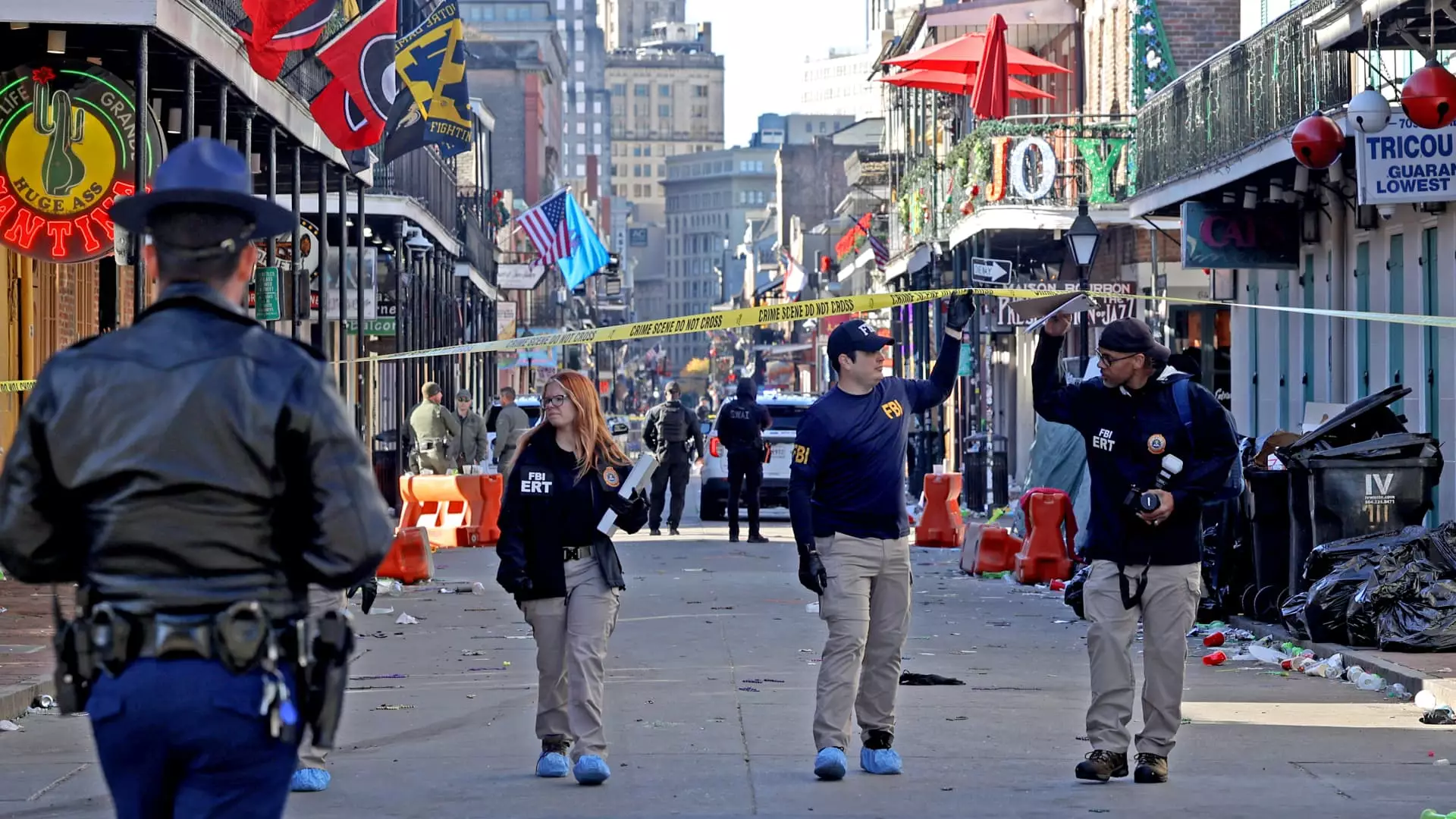The dawn of the new year, traditionally a time for celebration and resolutions, turned into a harrowing scenario this January 1st with two shocking events unfolding nearly simultaneously. A horrific car-ramming incident in New Orleans left a wave of destruction, claiming the lives of 15 individuals and injuring more than 30 others. In a separate yet equally devastating occurrence, a Tesla Cybertruck explosion near Las Vegas’ Trump International Hotel added layers of complexity to an already chaotic situation, leading authorities to explore potential connections between the two incidents. While both events independently shocked the nation, the possible overlap in military backgrounds of the suspects has reignited discussions on security and domestic terrorism.
In the wake of these incidents, law enforcement agencies have been diligently exploring potential connections between the individuals involved in the New Orleans attack and the Las Vegas explosion. The primary suspect in the New Orleans ramming, identified as Shamsud-Din Jabbar, was not just a perpetrator but also a U.S. Army veteran with a history in human resources and IT. His time served in Afghanistan raises troubling questions about military experiences shaping his actions. Meanwhile, the suspect responsible for the Tesla explosion, whose identity remains undisclosed, is also believed to have military ties, adding a disturbing dimension to these tragedies that both involved individuals with combat experiences.
Investigators are meticulously tracing a thread of commonality, with both suspects reportedly renting vehicles from the same platform, a car-sharing service called Turo. Turo is actively collaborating with law enforcement, indicating the gravity of the situation. As the investigation deepens, concerns mount over whether this connection might reflect a larger issue concerning how seemingly innocuous services might be exploited for malicious intents.
In New Orleans, the early hours of New Year’s Day should have encapsulated the joyous spirit of the festivities, particularly on Bourbon Street, a thoroughfare teeming with revellers. However, what occurred around 3:15 AM transformed this vibrant atmosphere into one of horror. Eyewitness accounts paired with alarming social media footage illustrated the chilling reality of the attack, depicting bloodied scenes and victims left in the wake of Jabbar’s rampage. Law enforcement officials, including Police Superintendent Anne Kirkpatrick, described Jabbar’s intentions as malicious and deliberate, emphasizing that he aimed to cause maximum havoc.
A major point of contention raised by local officials, including Mayor LaToya Cantrell, revolved around the absence of safety barriers that could have potentially mitigated the impact of the tragedy. Currently under construction, these safety features were supposed to be in place prior to the Super Bowl events in February, but their delayed completion raised questions about urban planning and public safety. The tragic loss of life serves as a painful reminder of the urgent need to prioritize protective measures in highly trafficked areas.
As both federal and local law enforcement ramped up their investigations, the implications of the two incidents ignited nationwide fears of escalating domestic terrorism. President Joe Biden has vowed government support in investigating possible connections, acknowledging the prominence of military experience among those implicated. This alarming trend indicates that the intersection of military service and civilian life is producing an unsettling line of inquiry into domestic violence and terrorism, challenging the notion of safety within our communities. While operations continued to screen for further suspects or associates, the psychological toll on the victims’ families and the broader communities is immeasurable.
Further complicating the situation, early reports suggested potential explosive devices connected to the New Orleans attack. Such findings not only underscore the gravity of the circumstance but also illustrate the calculated nature of these horrendous acts. With discussions surrounding security heightened in the wake of both events, the country faces an arduous path towards recovery, necessitating an intimate examination of how such acts of violence can be curbed in the future.
As investigations continue and the reverberations of these tragedies are felt across the nation, there remains much to uncover. The connections between domestic violence, radicalization, and military experience warrant urgent analysis as authorities work tirelessly to ensure the safety of all citizens. While the Sugar Bowl, a significant college football event, is set to proceed in New Orleans, many will attend with a heavy heart and minds filled with questions. As communities seek healing from this double catastrophe, it is incumbent upon both officials and citizens to confront the broader implications—striving for understanding, unity, and most importantly, safety in the new year ahead.


Leave a Reply